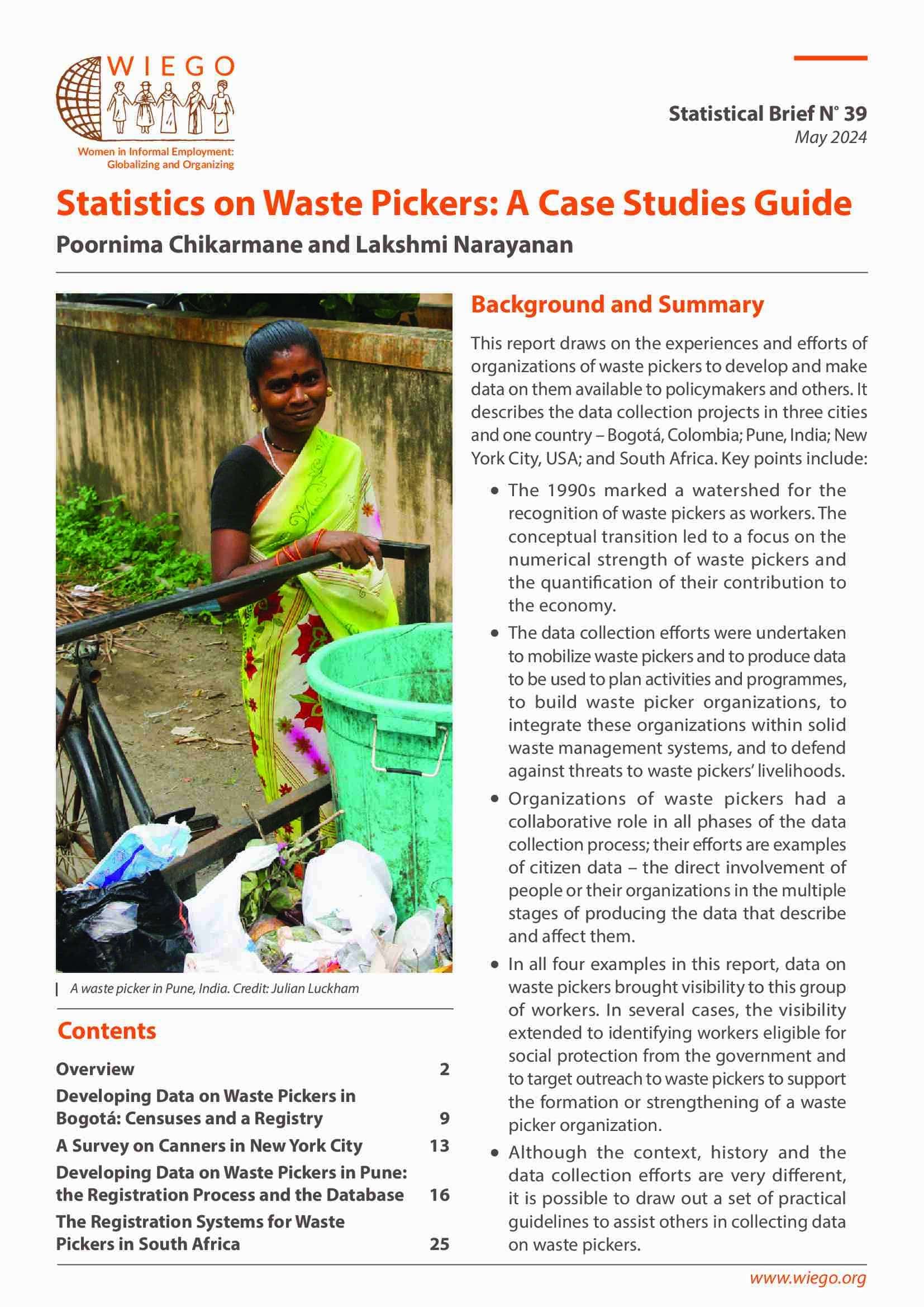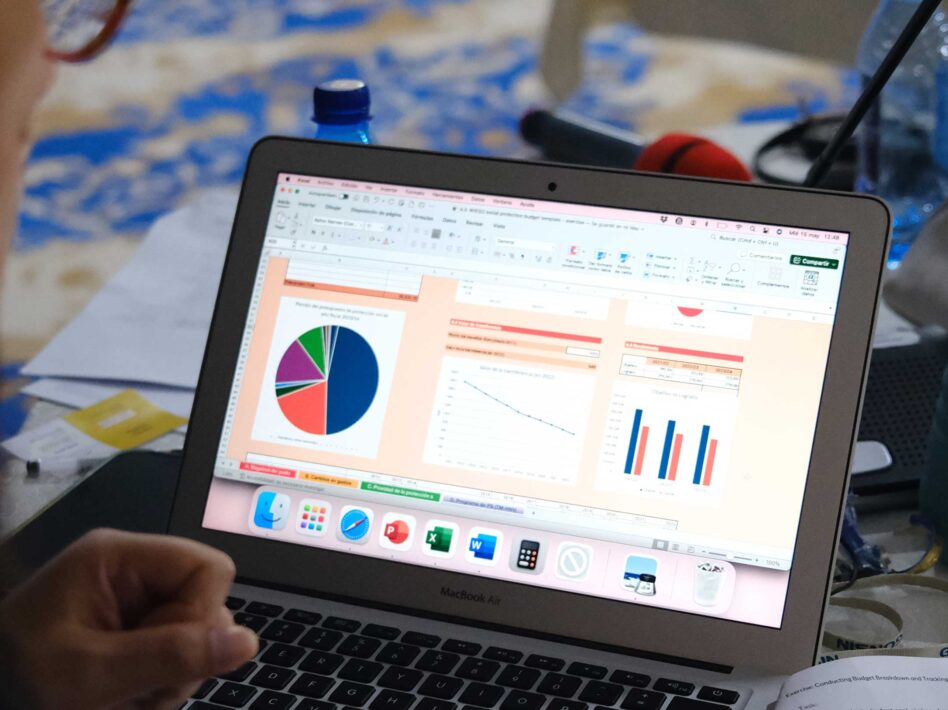Statistics on Waste Pickers: A Case Studies Guide
This report draws on the experiences and efforts of organizations of waste pickers to develop and make data on them available to policymakers and others. It describes the data collection projects in three cities and one country – Bogotá, Colombia; Pune, India; New York City, USA; and South Africa. Key points include:
- The 1990s marked a watershed for the recognition of waste pickers as workers. The conceptual transition led to a focus on the numerical strength of waste pickers and the quantification of their contribution to the economy.
- The data collection efforts were undertaken to mobilize waste pickers and to produce data to be used to plan activities and programmes, to build waste picker organizations, to integrate these organizations within solid waste management systems, and to defend against threats to waste pickers’ livelihoods.
- Organizations of waste pickers had a collaborative role in all phases of the data collection process; their efforts are examples of citizen data – the direct involvement of people or their organizations in the multiple stages of producing the data that describe and affect them.
- In all four examples in this report, data on waste pickers brought visibility to this group of workers. In several cases, the visibility extended to identifying workers eligible for social protection from the government and to target outreach to waste pickers to support the formation or strengthening of a waste picker organization.
- Although the context, history and the data collection efforts are very different, it is possible to draw out a set of practical guidelines to assist others in collecting data on waste pickers.
View list of all: Statistical Briefs

